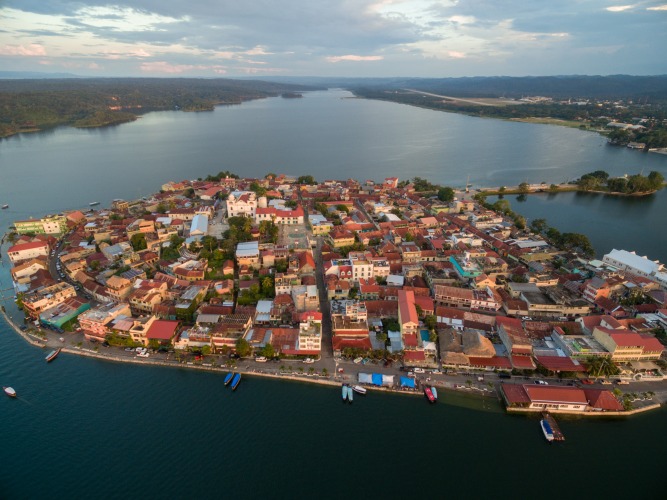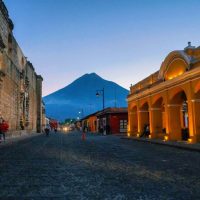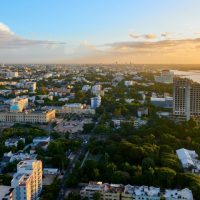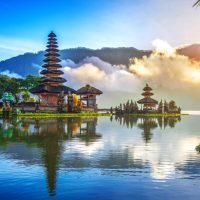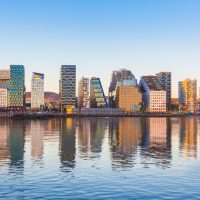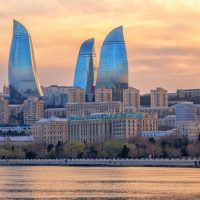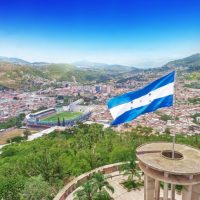Guatemala, meaning the land of many trees, has been inhabited for 20,000 years.
The land itself is as unique as its history.
The country has access to the Pacific and Caribbean as well as plays host to rainforests, ancient indigenous sites, and volcanoes.
A variety of this magnitude is a great place for life to find a way.
That is, of course, if they can weather the multitude of storms and eruptions.
Perhaps the most famous name in Guatemala’s history is also related to its greatest mystery.
Well, maybe it’s not as much of a mystery when you consider half of the natives descend from the Mayan civilization.
No matter how you slice it, despite the current travel warnings, there’s plenty to see in Guatemala.
If you’re planning a trip, stay tuned.
These places belong on the do-not-travel list when you land.
Contents
10 Most Dangerous Cities in Guatemala
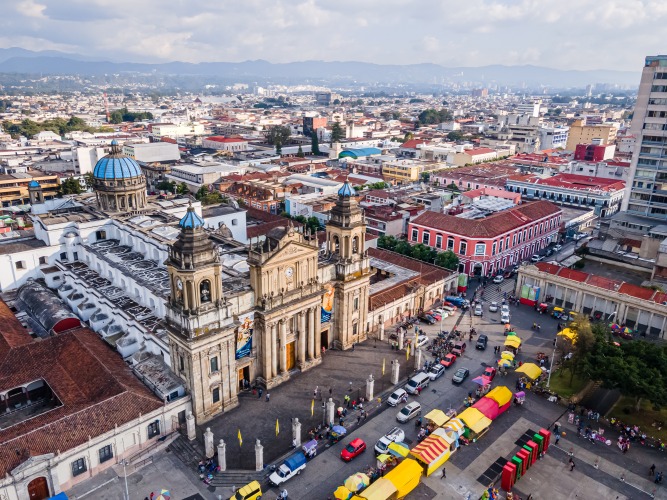
1. Guatemala City
The country’s namesake city is in the south and is surrounded by green spaces.
Violent crime rates have been increasing since 2020, whereas in the decade prior they had been decreasing.
Whatever it was that brought on the new issues, Guatemala City’s crime index is 64.
Corruption and bribery seem to be the top criminal activities going on locally.
Violent crimes follow closely behind.
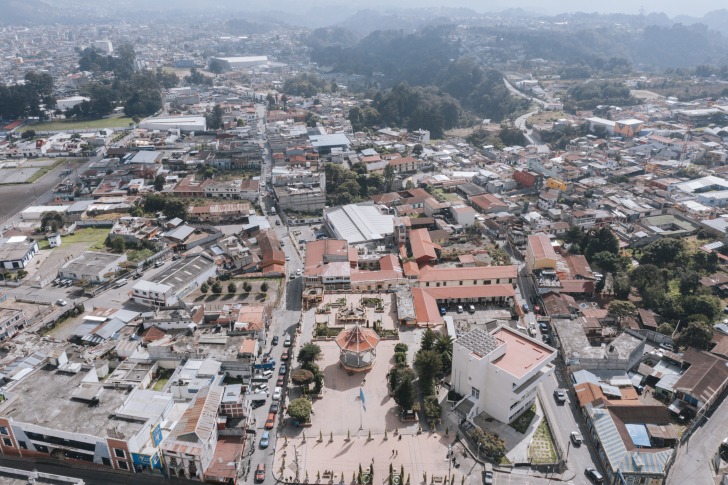
2. San Marcos
A stone’s throw from the Mexican border, San Marcos’ location might be its Achilles heel.
The US Embassy in Guatemala has declared San Marcos a place not to travel to.
Prolonged violence has made it practically impossible to get to without escalated turmoil.
It’s so dangerous, the embassy is working to get Americans out.
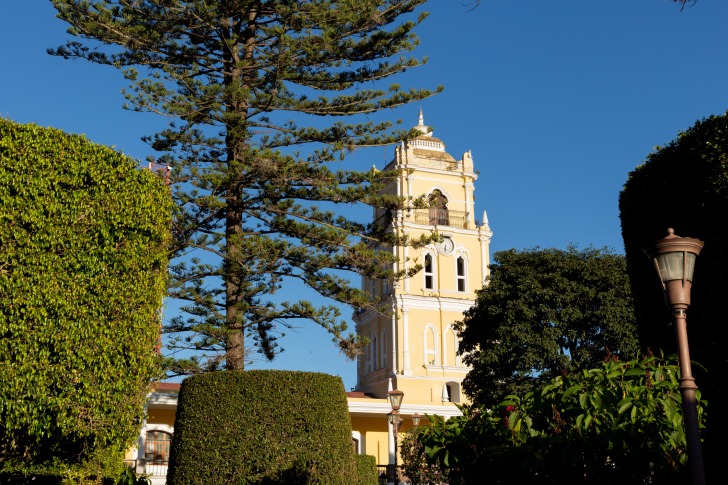
3. Huehuetenango
This western city in Guatemala is popular with those who like hitting up the outdoors.
Visitors can come here and have an adventure.
In fact, many native Guatemalans have moved here from other parts of the country.
Local criminals know how much of a tourist hotspot Huehuetenango is and take advantage of it.
The crime rate is high here because of the robberies.

4. Villa Nueva
Just south of the capital is Villa Nueva with beachfront access to Lago de Amatitlan.
That sounds great until you find out that the area is another labeled do-not-travel due to violence.
Extra precautions should be taken if you find yourself riding through it anyway.
Avoid all white cars, leave all signs of wealth back home, and leave your cell phone for use behind closed doors only.
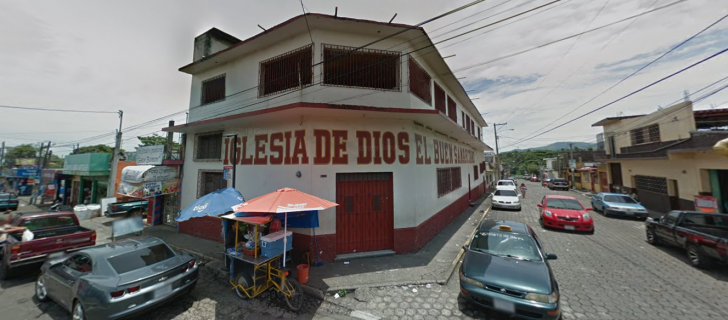
5. Escuintla
It may be a small area, but Escuintla thrives on sugar.
Sugar gives people a kick when they are dragging.
In Escuintla, it may cause violence.
Well, not sugar probably, but something.
They have the highest homicide rate in Guatemala.
In total, there are 77 for every 100,000 citizens.

6. Izabal
Izabal is lucky enough to have multiple bodies of water to enjoy.
On the Caribbean coast, the area is frequently used to move cocaine north from Honduras.
Also in the region, there is a high rate of human and sex trafficking.
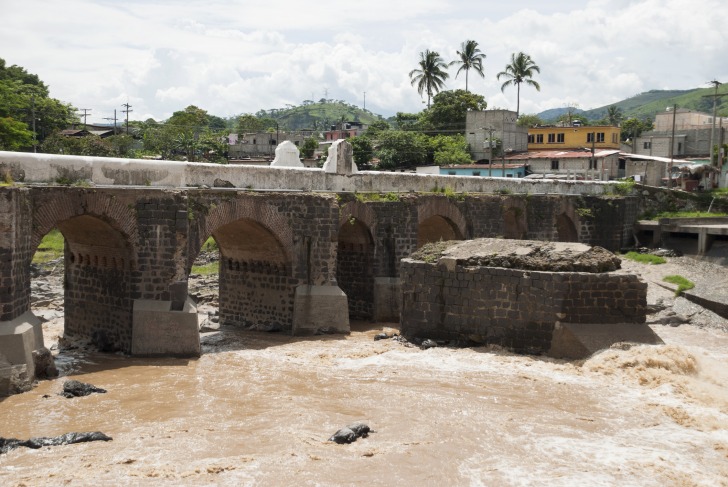
7. Santa Rosa Cuilapa
This small but busy area is only about an hour and a half from El Salvador‘s border.
If you’re driving through on the way, you might be tempted to check out local establishments.
Visitors should stay in populated areas and not have any valuables on them.
Pickpocketing and mugging have been geared toward tourists.
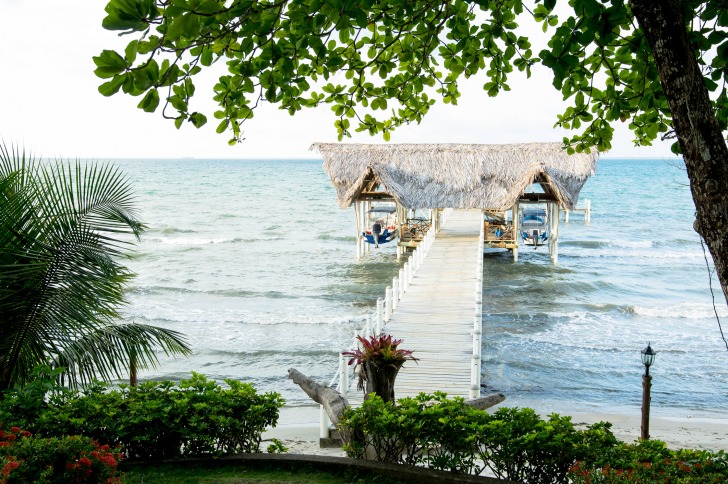
8. Puerto Barrios
Puerto Barrios is in close proximity to Izabal on Amatique Bay.
Not surprisingly, this is also a very violent place to set up shop.
There are 138 murders for every 100,000 citizens.
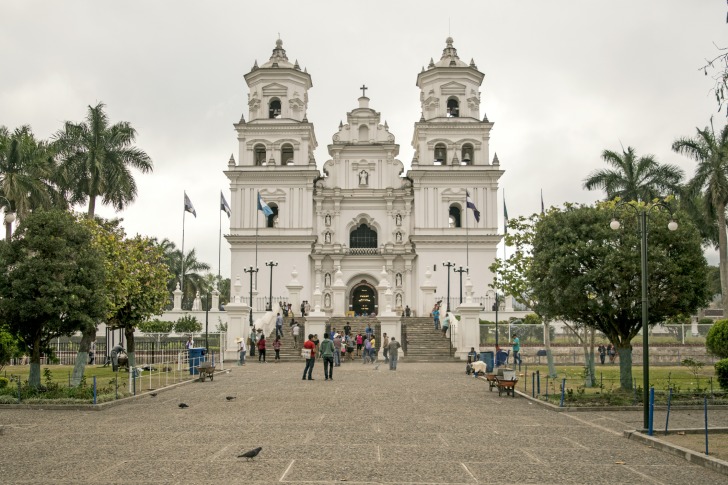
9. Esquipulas
From Esquipulas, it would take less than 15 minutes to reach Honduras.
As convenient as that sounds, it’s exactly what drug traffickers had in mind.
Unfortunately, Esquipulas has become a hub for an accumulation of substances like cocaine.
10. Sibinal
So close to the Mexican border that you could walk there, Sibinal finds itself having the same problems as its neighbor, San Marcos.
Because it’s closer than San Marcos, the corruption is worse as drugs are pushed through regularly.
5 Safety Tips for Traveling to Guatemala
1. Research Locations
When visiting a new place, it’s easy to get lost in the excitement of just exploring the new-to-you territory.
However, it’s the safest plan of action to have a game plan.
Before even packing a bag, do some digital digging.
Get a map of the initial area you plan to stay in.
On that map, mark where you’re staying, the hospital, the police station, and other landmarks you plan to visit.
Then, look around the map and see if there’s anything else you have time for.
Be sure to find out what the crime rates are like in the cities surrounding where you’ll be.
You’ll want to be aware of how safe it is to travel through or wander around these areas.
2. Don’t Be A Vampire
It’s tempting to indulge in the nightlife of wherever you’re on vacation.
Unfortunately, most of Guatemala isn’t particularly safe for tourists after dark.
Sure, this isn’t meant to apply everywhere.
One of the things many love about Latin culture is music, dancing, and food.
All of those aspects happen at night and can be quite lively.
The problem is that criminals expect tourists to be out late and partying with the locals.
Preying on unsuspecting visitors is easily classified as a profession, especially in some of the more crime-ridden areas.
For that reason, it’s best to get the most out of your stay during the daylight hours unless you have friends or family who can watch your back.
3. Don’t Dangle
Pickpocketing has gotten to be a real problem in many Guatemalan cities, especially the bigger ones.
For the trained eye, it’s easy to spot loosely held bags from a mile away.
All it takes is a slight distraction and a purse on a long chain can be easily slid away and gone before it’s noticed missing.
The same can be said for keeping a bulbous wallet in a pocket.
When out walking the streets or touring around, leave as much as possible in the hotel room.
Get a necklace pocket that’s big enough to fit a cell phone, cards, and cash.
Wear it under your shirt so it’s not dangling by your side when you walk or sticking out of your pockets.
The idea is to look like you have nothing valuable connected to your body so you don’t become a target.
4. Look At The Weather
No one wants to be a victim of a crime just as much as no one wants to be taken by surprise by a natural disaster.
Many of these, including flooding and tsunamis, happen during the rainy season.
The timeline for that is usually from May through October.
Not only is it not fun to get rained out of an entire vacation, but it might also be insufferably hot.
Sure, it sounds like a great time to avoid hoards of tourists.
But at what cost?
To be fair, you’re not exactly out of trouble at other times of the year, either.
There are still earthquakes, eruptions, and even landslides.
Before catching a taxi to the airport, get informed about the upcoming forecast.
5. Avoid Protests
While learning about what weather is to come, check out the local news.
In a country of political unrest, protests have been popping up more frequently in the last several years.
If there’s an active protest, you might want to avert your plans.
A majority of protests are civil, but it’s better safe than sorry.
Guatemala Safety Overview
READ THE FULL REPORT: Guatemala Safety Review
Safety Index: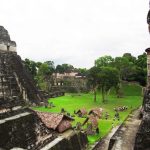
- OVERALL RISK: MEDIUM
- TRANSPORT & TAXIS RISK: LOW
- PICKPOCKETS RISK: MEDIUM
- NATURAL DISASTERS RISK: MEDIUM
- MUGGING RISK: HIGH
- TERRORISM RISK: MEDIUM
- SCAMS RISK: MEDIUM
- WOMEN TRAVELERS RISK: LOW
Frequently Asked Questions
Why is crime high in Guatemala?
This Central American country just so happens to be in an awkward place.
Guatemala is, unfortunately, part of drug routes taken from other South American countries and up through Mexico.
As drugs pass through, other crimes tend to follow.
From robbery to murder and property damage, there are plenty of risks that come on these routes.
Often, innocent people get caught up in violence and that can sometimes extend to tourists.
Currently, that has a lot to do with why the US Department of State encourages Americans not to travel to Guatemala.
Is there an English-speaking community in Guatemala?
Don’t plan to visit Guatemala as a non-Spanish speaker without a way to translate.
It’s definitely a bad idea to try and wing it or search for an English speaker upon arrival.
With that being said, Guatemala has the fourth largest English-speaking population in Latin America.
The largest area with Americans is Guatemala City.
You’re more likely to find English in the biggest cities where tourists frequent.
While Spanish is the national language, there are about two dozen languages spoken overall.
What are the safe cities in Guatemala?
It’s unfortunate that the country has a bad reputation because that shouldn’t overshadow everything from the Pacific to the Caribbean.
Nevertheless, there are some places you can go and feel as secure as you can in Guatemala.
For starters, Antigua Guatemala is a suburb of Guatemala City.
All around you can see leftover remnants of Spanish occupation thanks to the splendid architecture.
The biggest threat these days is the local volcano, which so happens to be active.
Other safe cities include Chiquimula, Panajachel, and San Pedro la Laguna.
